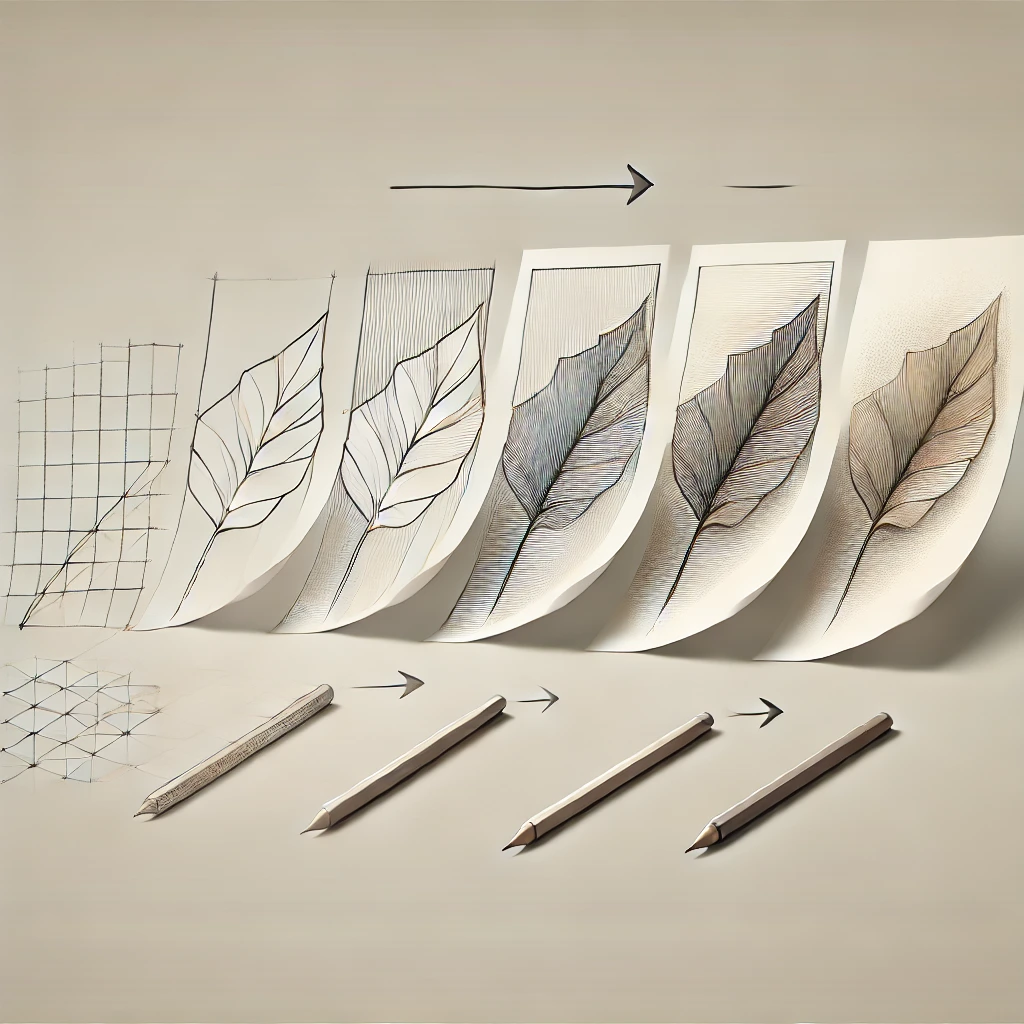Why Step-by-Step Instructions and Traditional Techniques Are the Best Way to Learn Art

Book a Free Consultation Call
By: Team MorningSun Art
Published: March 6, 2025
When it comes to learning art, especially drawing and painting, there is no shortcut to mastery. While many platforms and apps promise quick results using tracing or augmented reality (AR) tools, they often fail to develop real artistic skills. True artistry requires understanding form, shading, proportions, and technique—skills that can only be built over time through structured learning and deliberate practice.
The Importance of Traditional Techniques
Traditional art techniques form the backbone of all great art. Whether you aspire to create realistic portraits, expressive paintings, or intricate designs, mastering the fundamentals is essential. These include:
-
- Sketching with precision – Developing a steady hand and confident lines.
-
- Understanding light and shadow – Creating depth and realism through shading.
-
- Mastering proportions and anatomy – Essential for figure drawing and composition.
-
- Developing texture and detail – Using different strokes and blending techniques to create lifelike art.
By following step-by-step instructions, students build these essential skills in a structured way. This approach ensures they understand each fundamental before moving on to more complex techniques.
The Science Behind Learning Art Effectively
Research consistently shows that skill acquisition requires structured learning and deliberate practice. A study from the University of Toronto highlights that mastery comes from focused effort on improving specific skills rather than relying on shortcuts. Harvard researcher Dr. Teresa Amabile emphasizes that “artistic development requires structured learning that focuses on technique, composition, and critical thinking.”
Cognitive science also supports the idea that learning in stages is more effective than passive copying. Studies on expertise development show that breaking down a skill into manageable steps—known as scaffolding—helps students grasp complex concepts more efficiently and retain knowledge longer. This is why structured, step-by-step learning is the most effective approach for developing artistic ability.
Why Step-by-Step Learning Works
-
1. Breaks Down Complexity into Manageable Steps
:
- Learning to draw can be overwhelming, but step-by-step guidance allows artists to build on each previous skill. Instead of attempting an entire composition at once, learners start with basic shapes, refine their lines, add shading, and finally incorporate details. This gradual progression builds confidence and prevents frustration.
-
2. Encourages Active Learning and Problem-Solving
:
- Unlike tracing or using AR overlays, step-by-step learning forces students to analyze their work, recognize mistakes, and make corrections. This active engagement with the process leads to a deeper understanding of form, perspective, and composition.
-
3. Promotes Long-Term Skill Development
:
- Artists who learn through structured methods develop skills that translate into original artwork. Rather than relying on external aids, they gain the ability to create from observation and imagination, which is crucial for artistic growth.
Why Tracing and AR Tools Fall Short
While AR tools and tracing apps may seem like convenient learning aids, they don’t teach foundational skills. Here’s why relying on these tools can be limiting:
- Lack of Foundational Knowledge – Tracing does not teach proportions, shading, or perspective, which are essential for creating original artwork.
- No Problem-Solving Skills – Without the ability to analyze mistakes and correct them, artists remain dependent on external tools.
- Restricted Creativity – Following predefined outlines doesn’t allow artists to develop their own style or experiment with composition.
While AR tools and tracing can have a place in certain learning stages (such as understanding complex shapes), they should never replace structured training in fundamental techniques.
Combining Traditional Techniques with Modern Tools
At our platform, we recognize the value of traditional methods but also harness the power of modern technology to enhance learning. Our AI Assistant and Step vs. Step Differential Tool provide real-time feedback and personalized guidance, ensuring students stay on track while mastering essential techniques.
AI Assistant: Personalized Learning Support
Our AI Assistant acts as a digital tutor, helping students refine their work by offering guidance on:
-
- Proportion errors
-
- Shading techniques
-
- Composition adjustments This instant feedback prevents bad habits and accelerates improvement.
Step vs. Step Differential Tool: Gradual Mastery
This unique feature breaks down complex techniques into progressive steps, allowing learners to focus on one aspect at a time before moving to the next. By reinforcing prior knowledge at each stage, it ensures steady skill development.
The Path to True Artistic Mastery
Learning art is a journey, not a quick fix. Those who commit to structured practice with traditional techniques build real skills that last a lifetime. While tracing and AR apps may offer temporary satisfaction, they do not cultivate the deep understanding and creative problem-solving abilities that define great artists.
If you are serious about learning art, invest in a method that prioritizes true skill development. With a combination of step-by-step instruction, traditional fundamentals, and modern guidance tools, you can build a strong artistic foundation and achieve mastery over time.
View Related Courses
Newsletter
Join our newsletter for art tips, blog updates, and exclusive content.